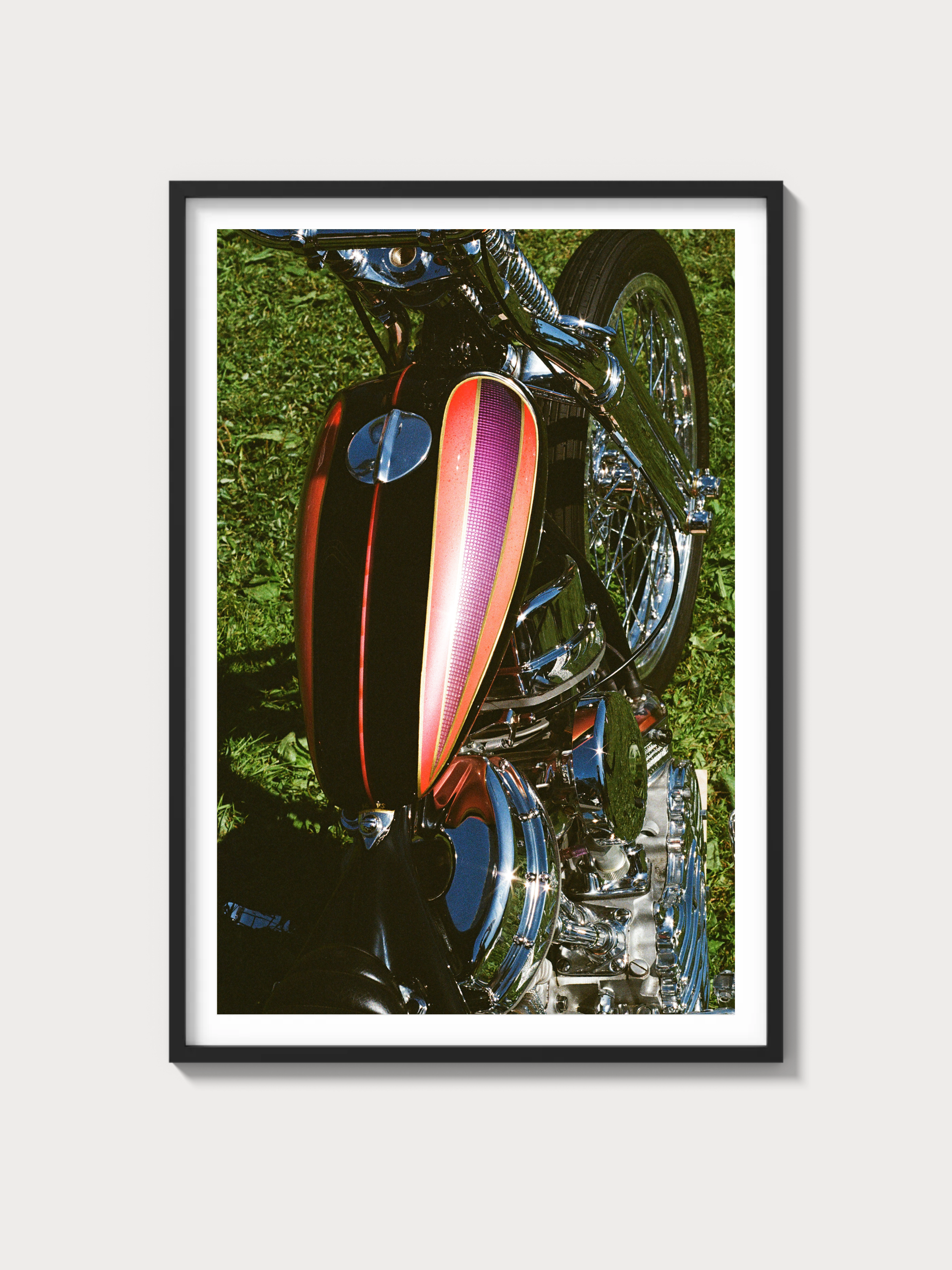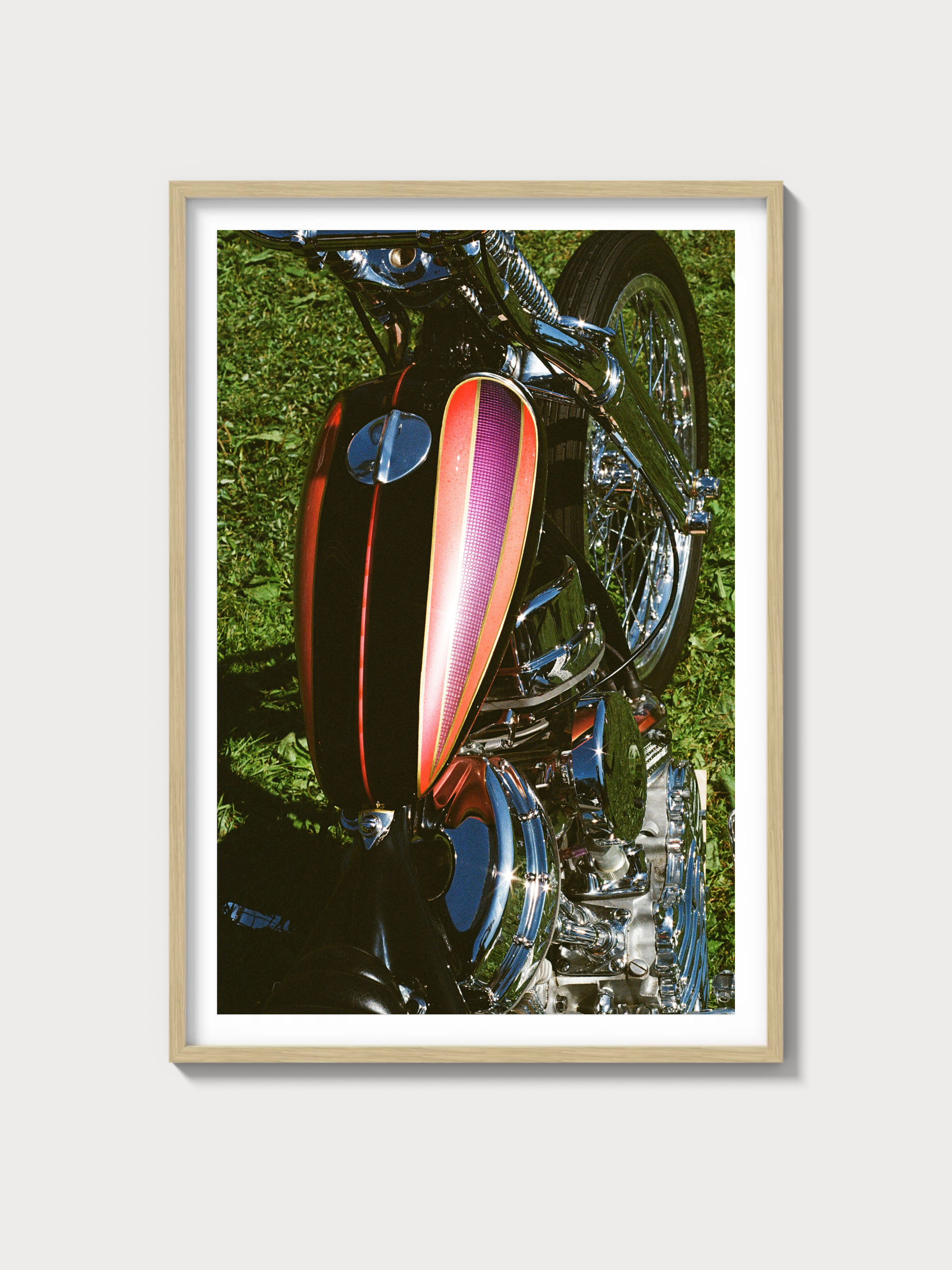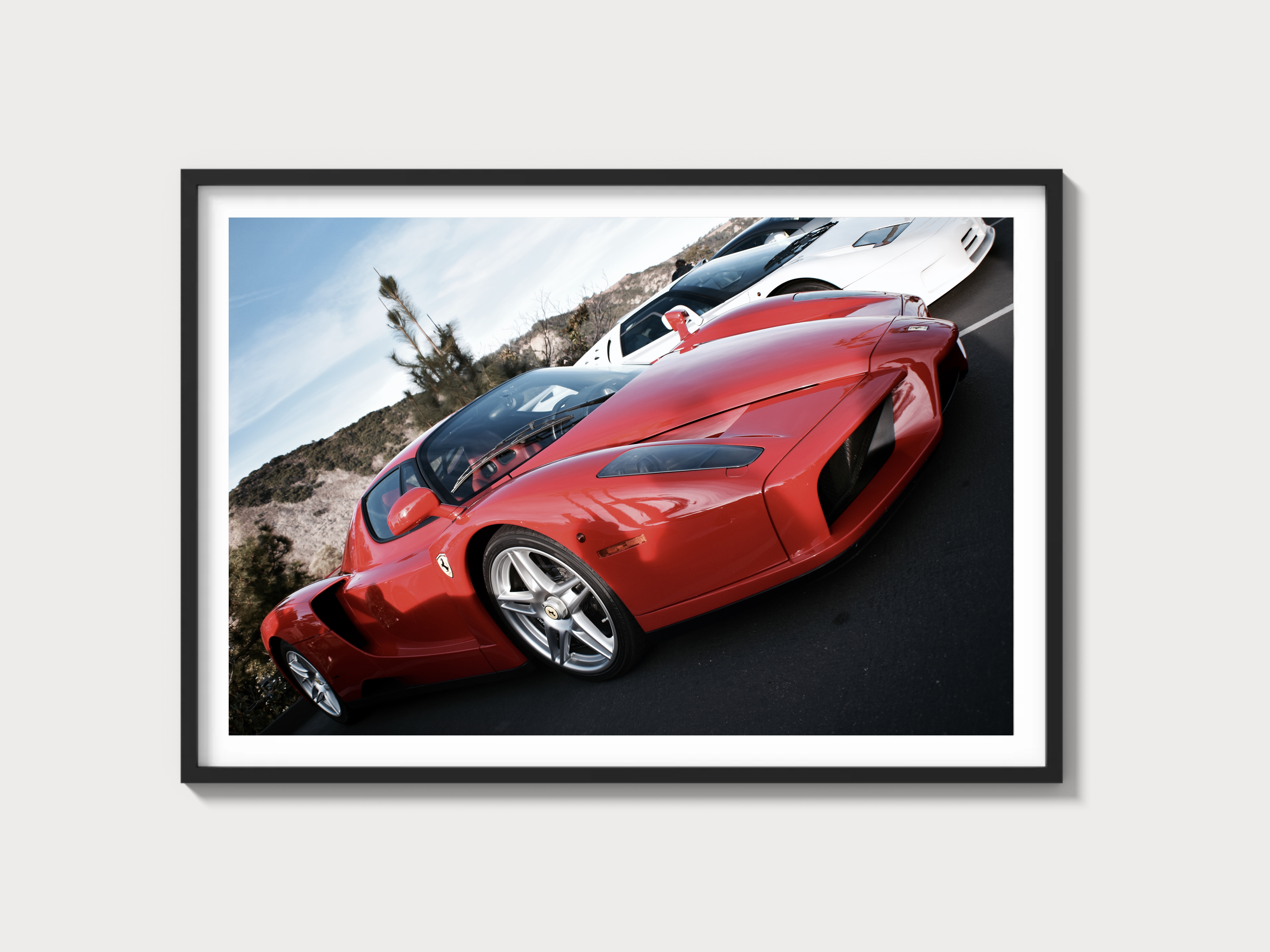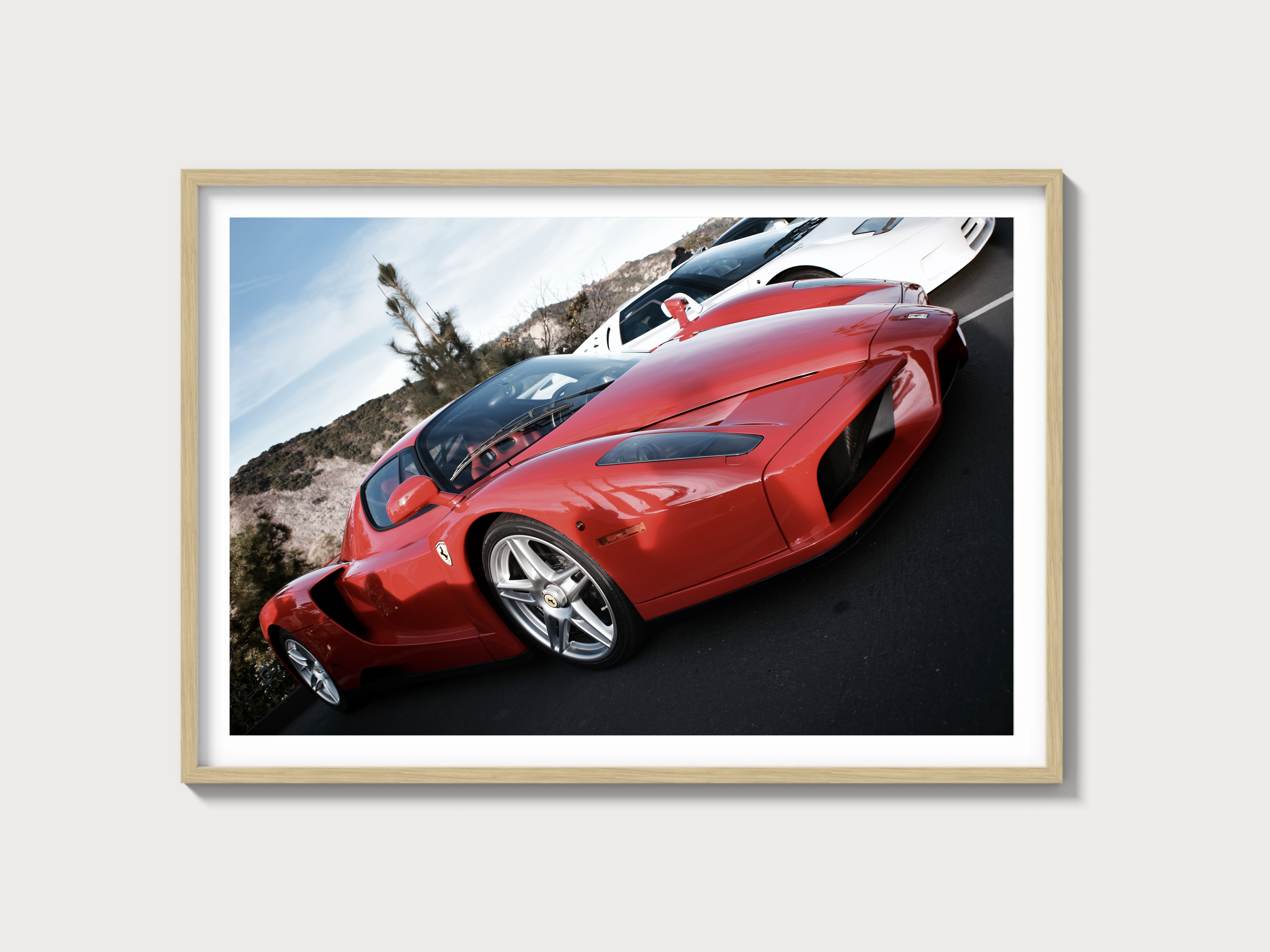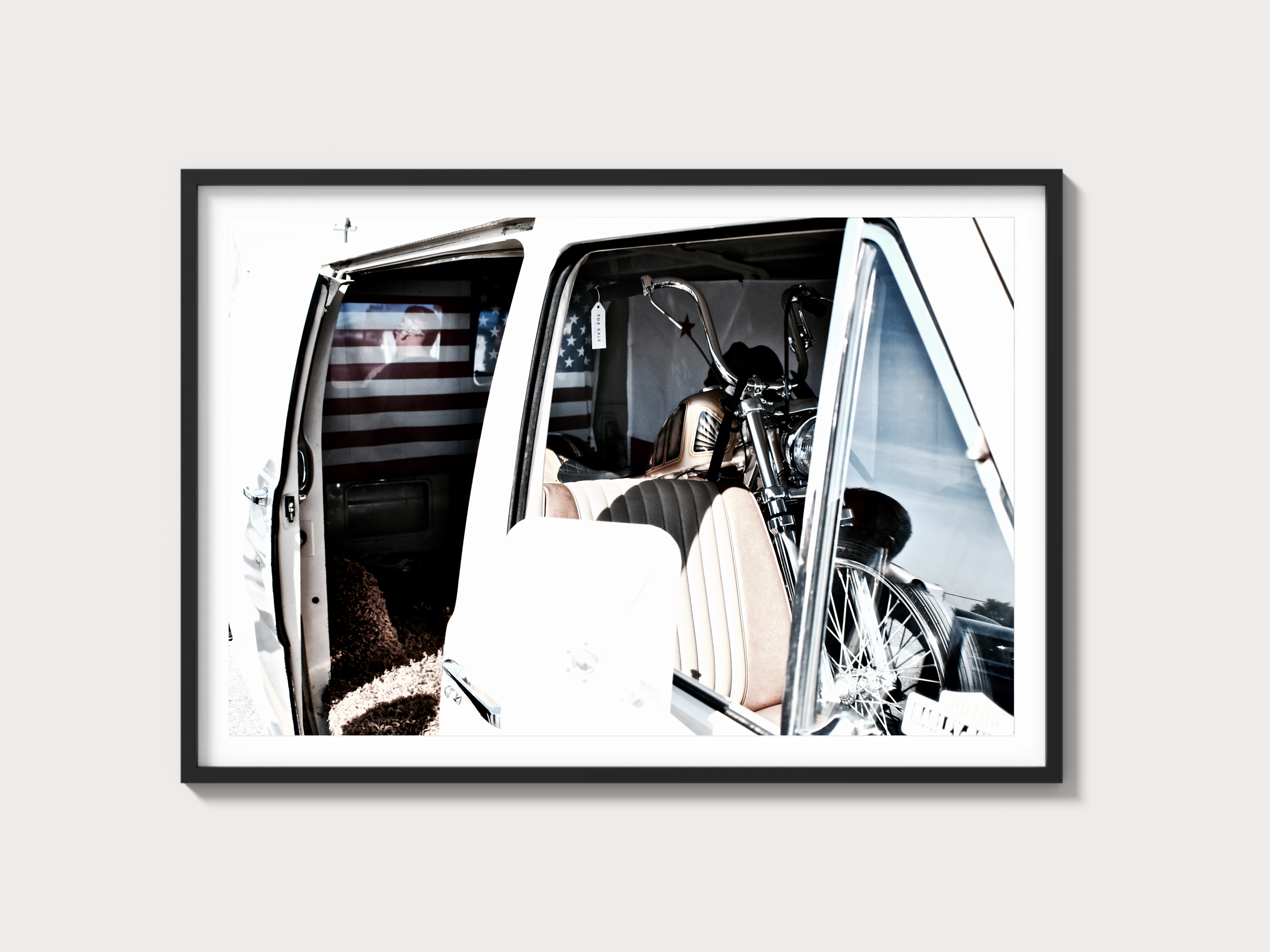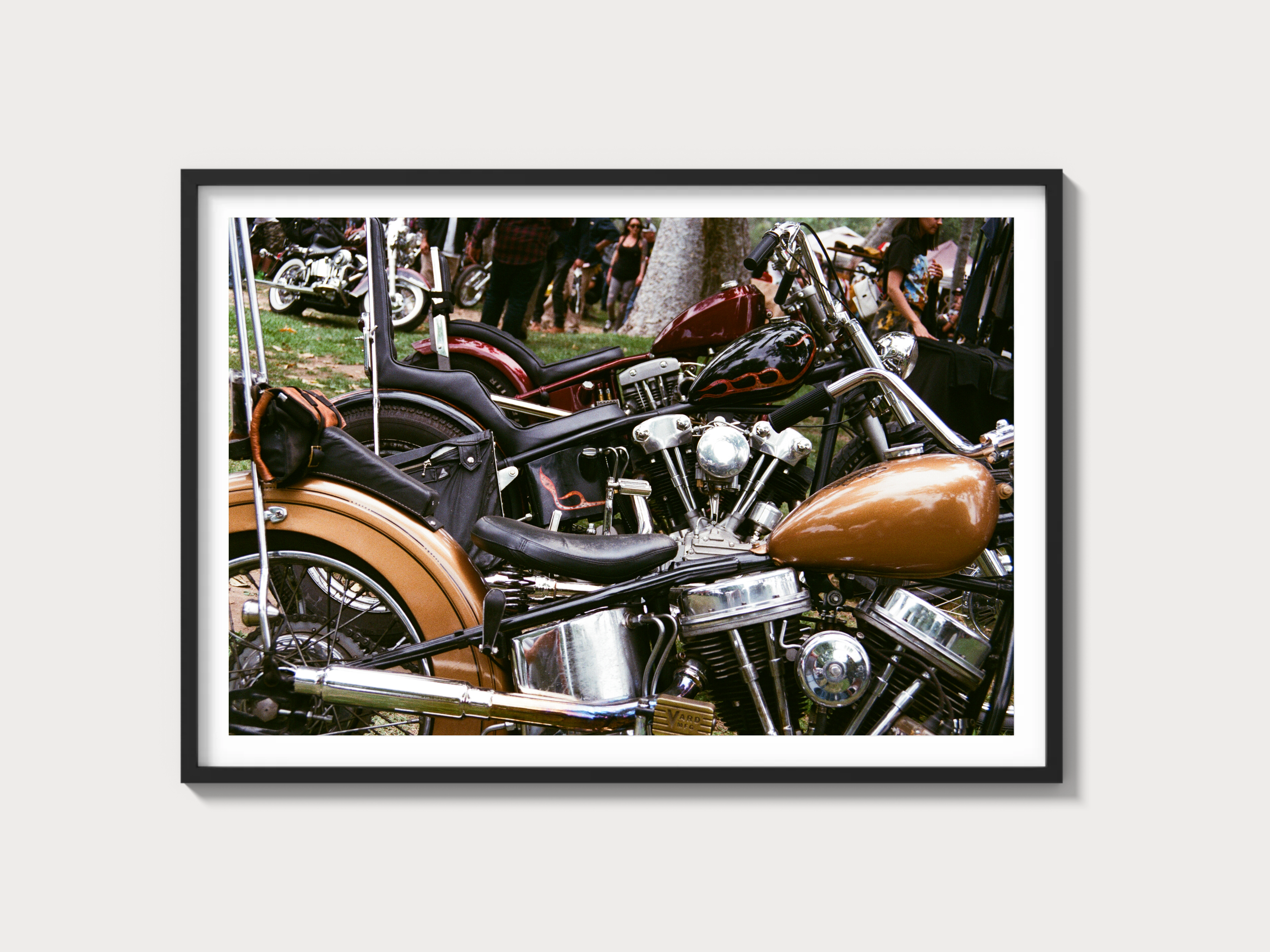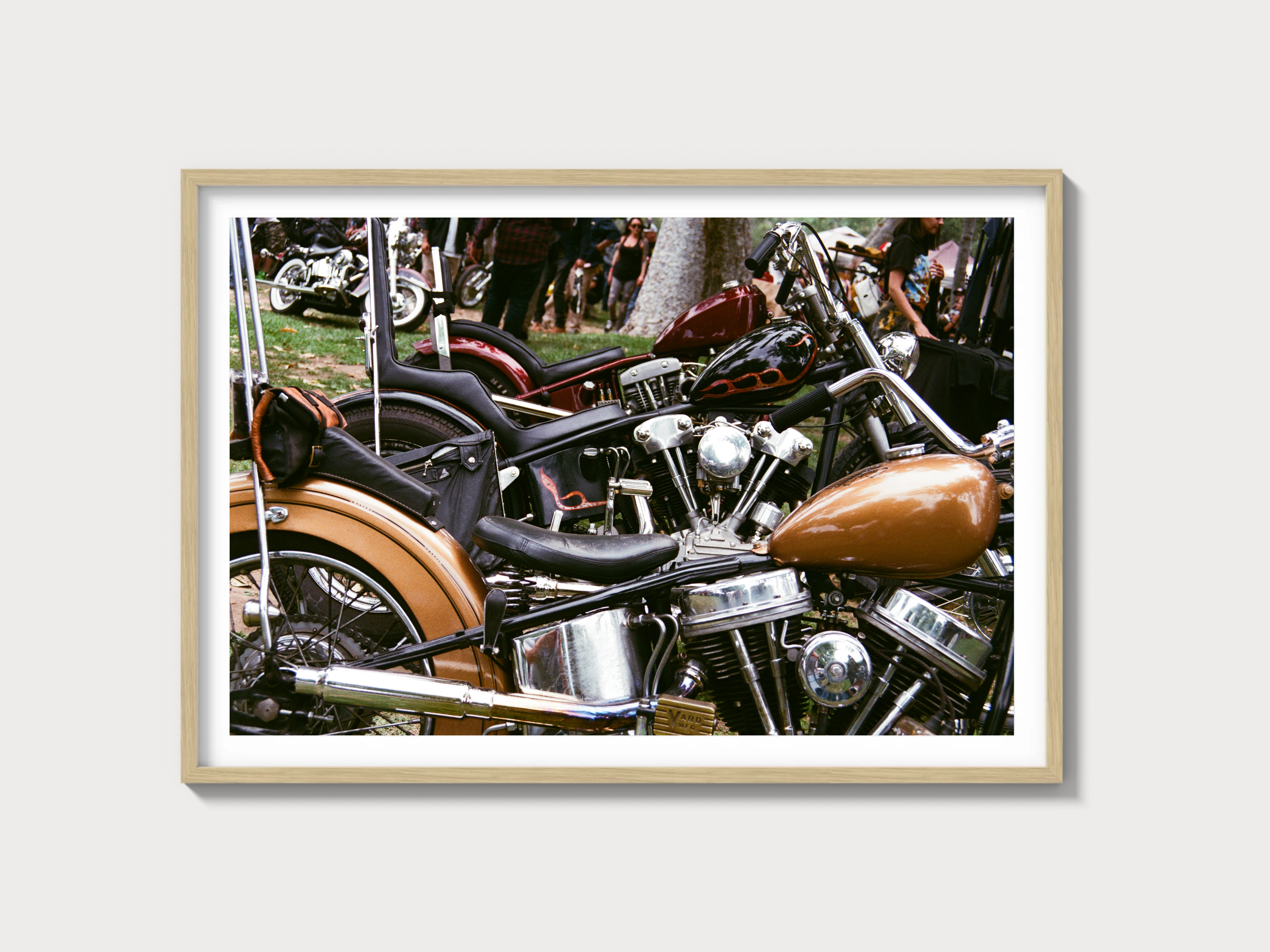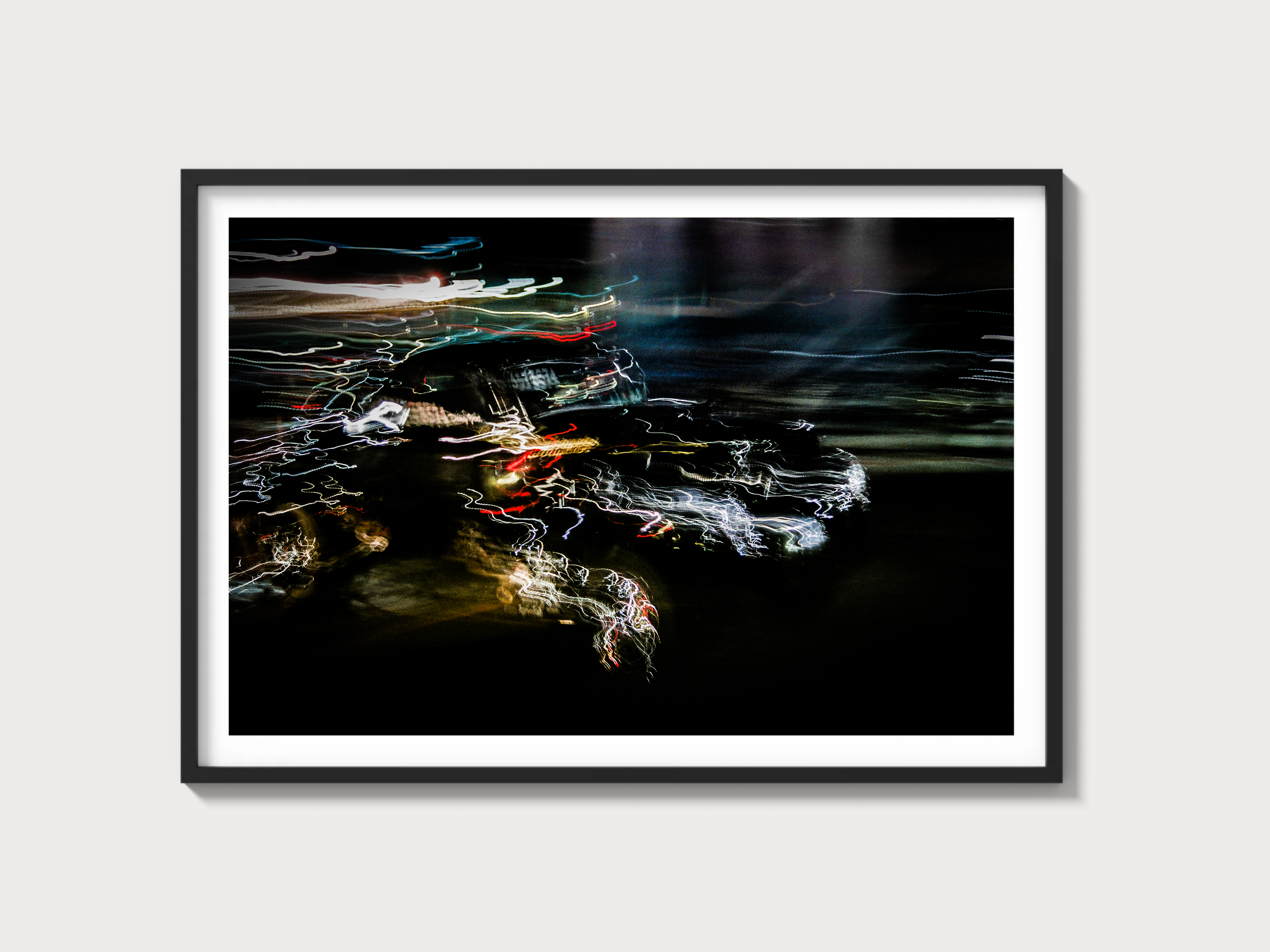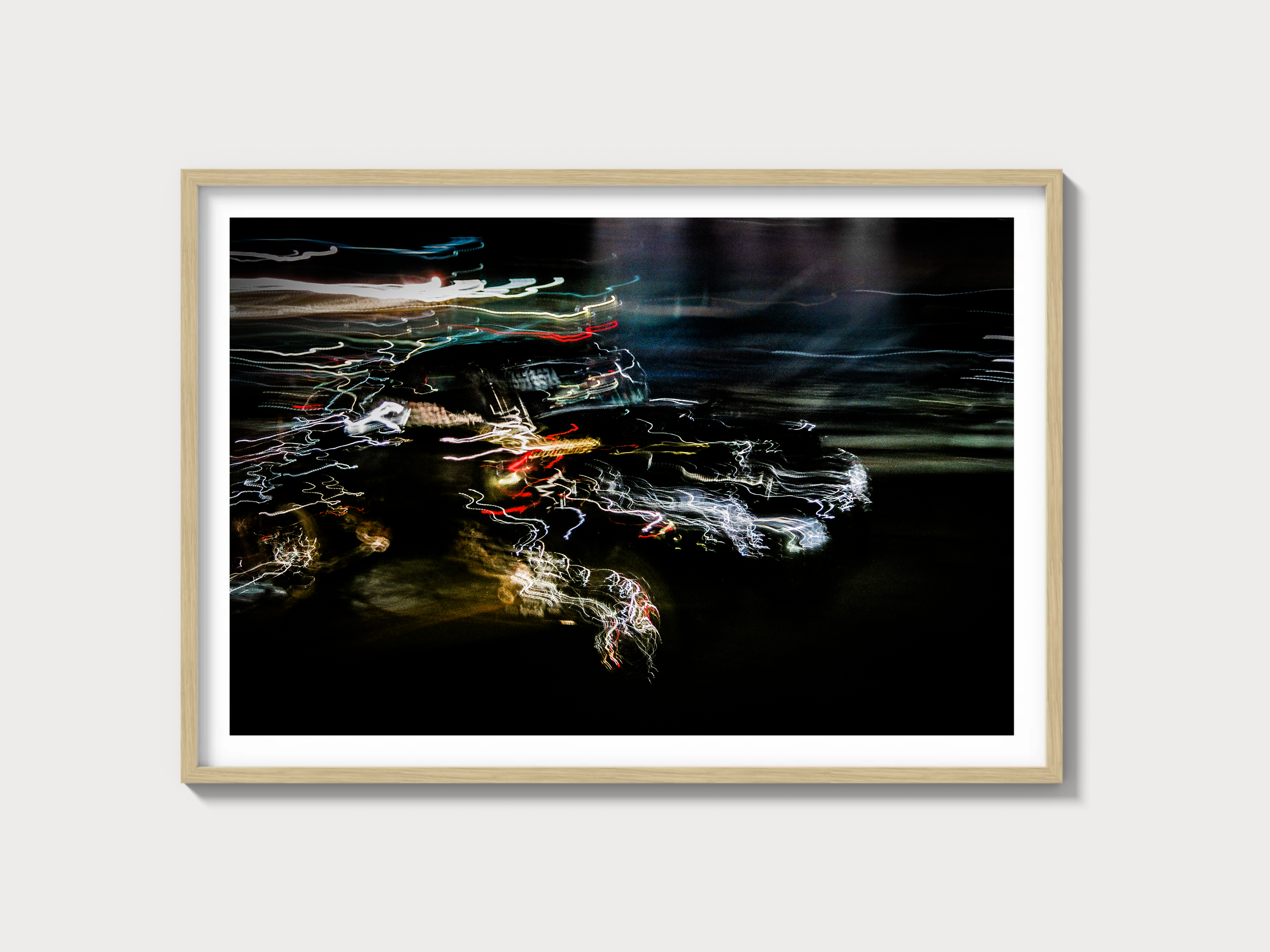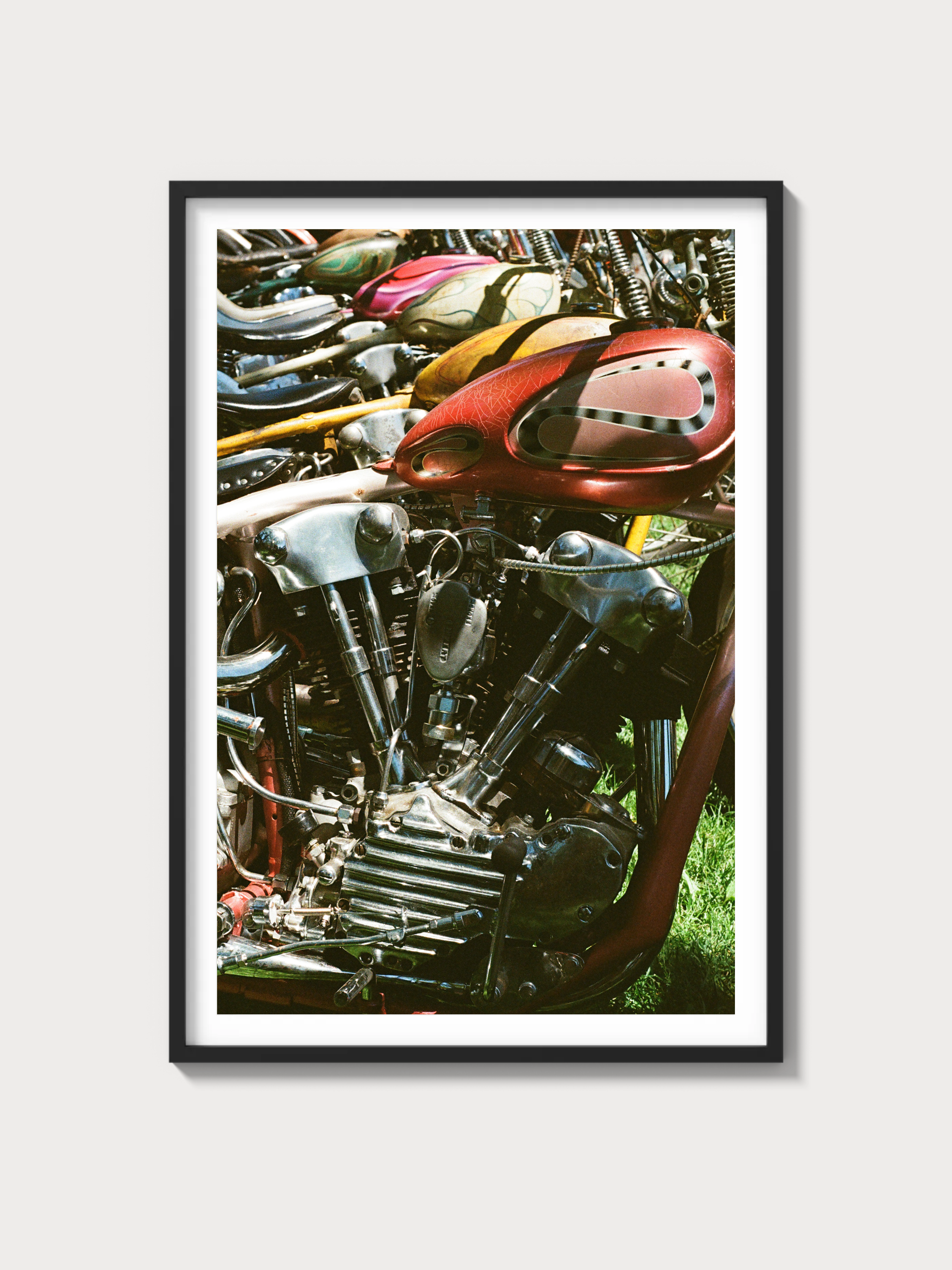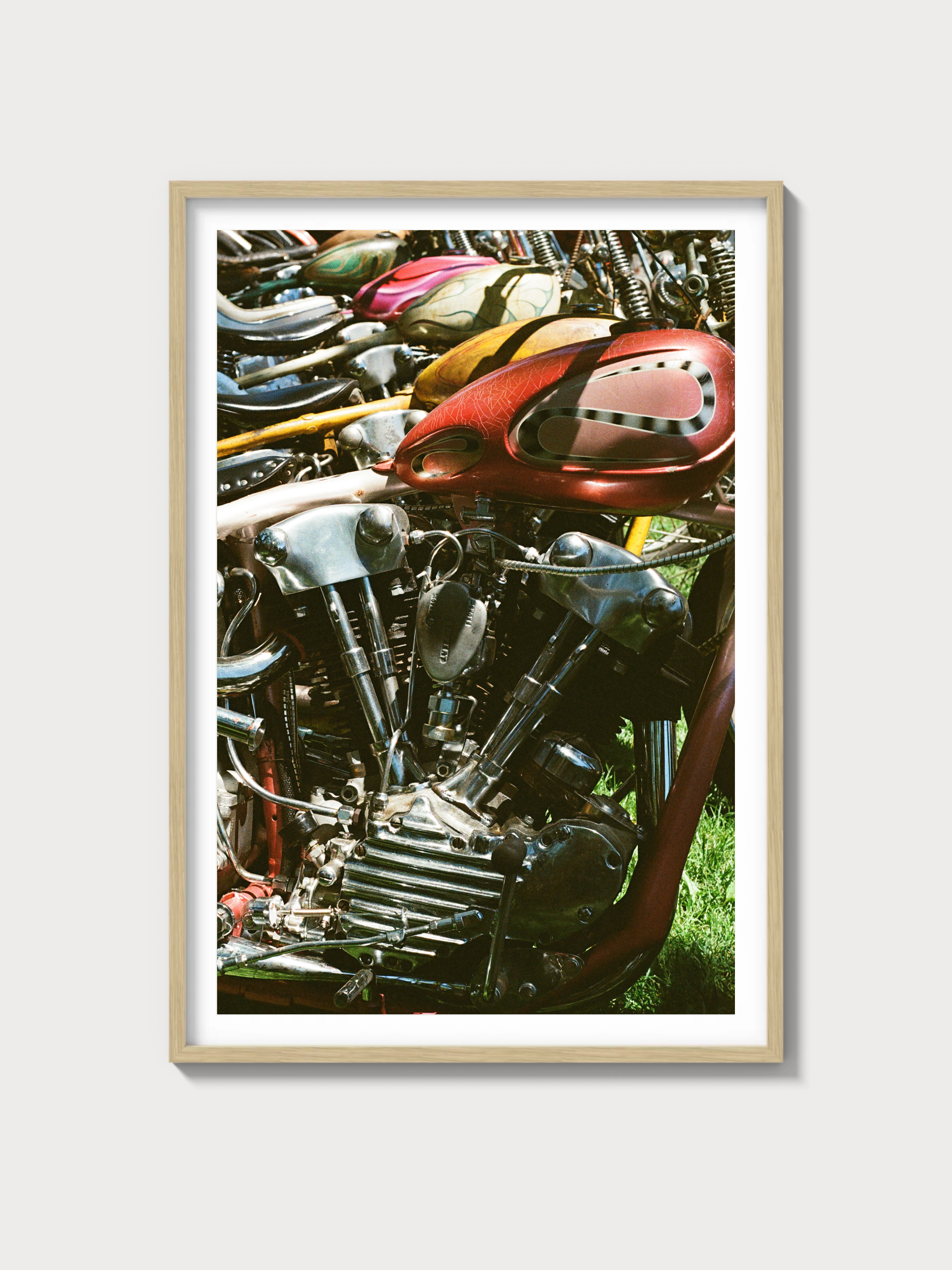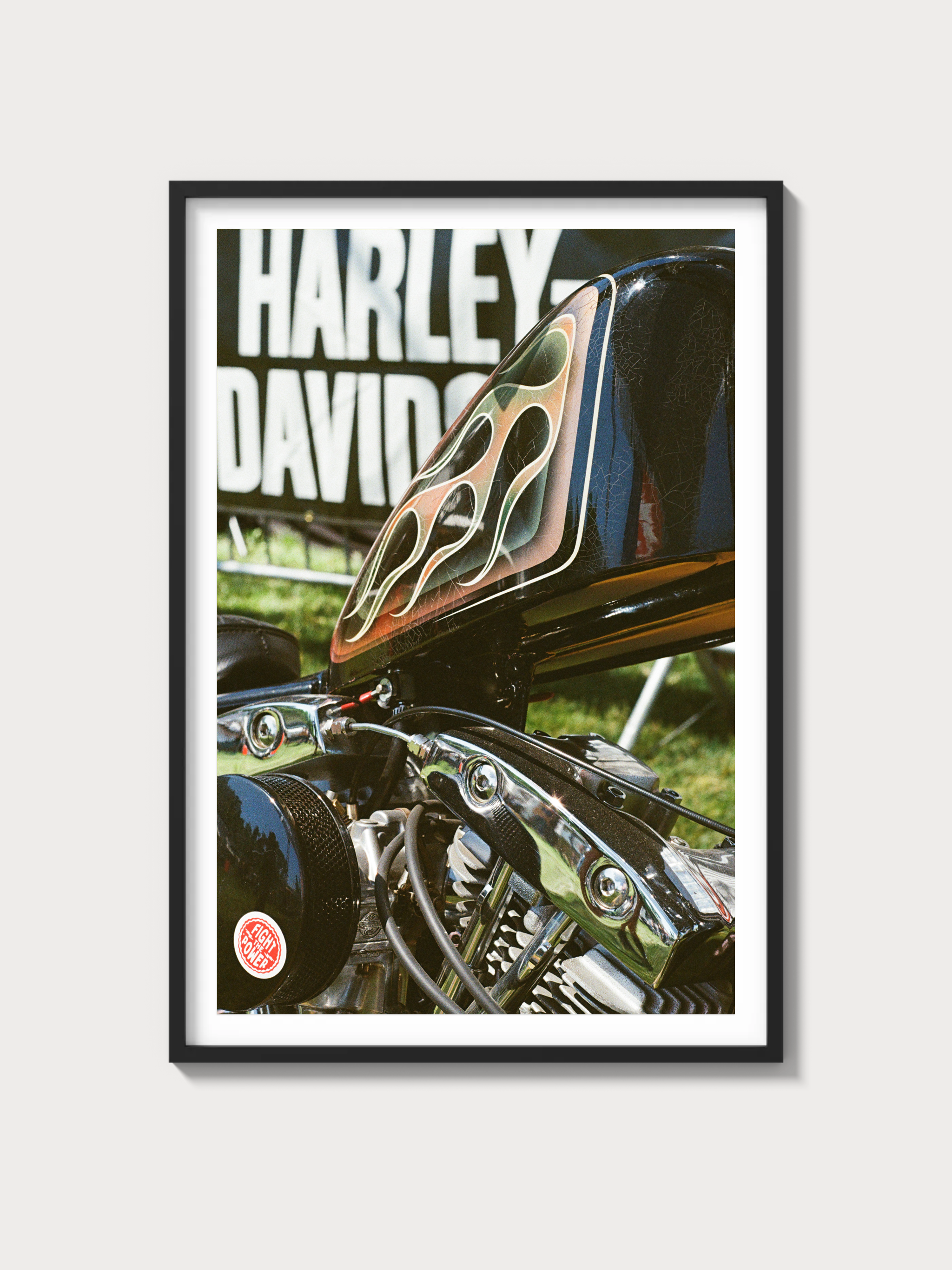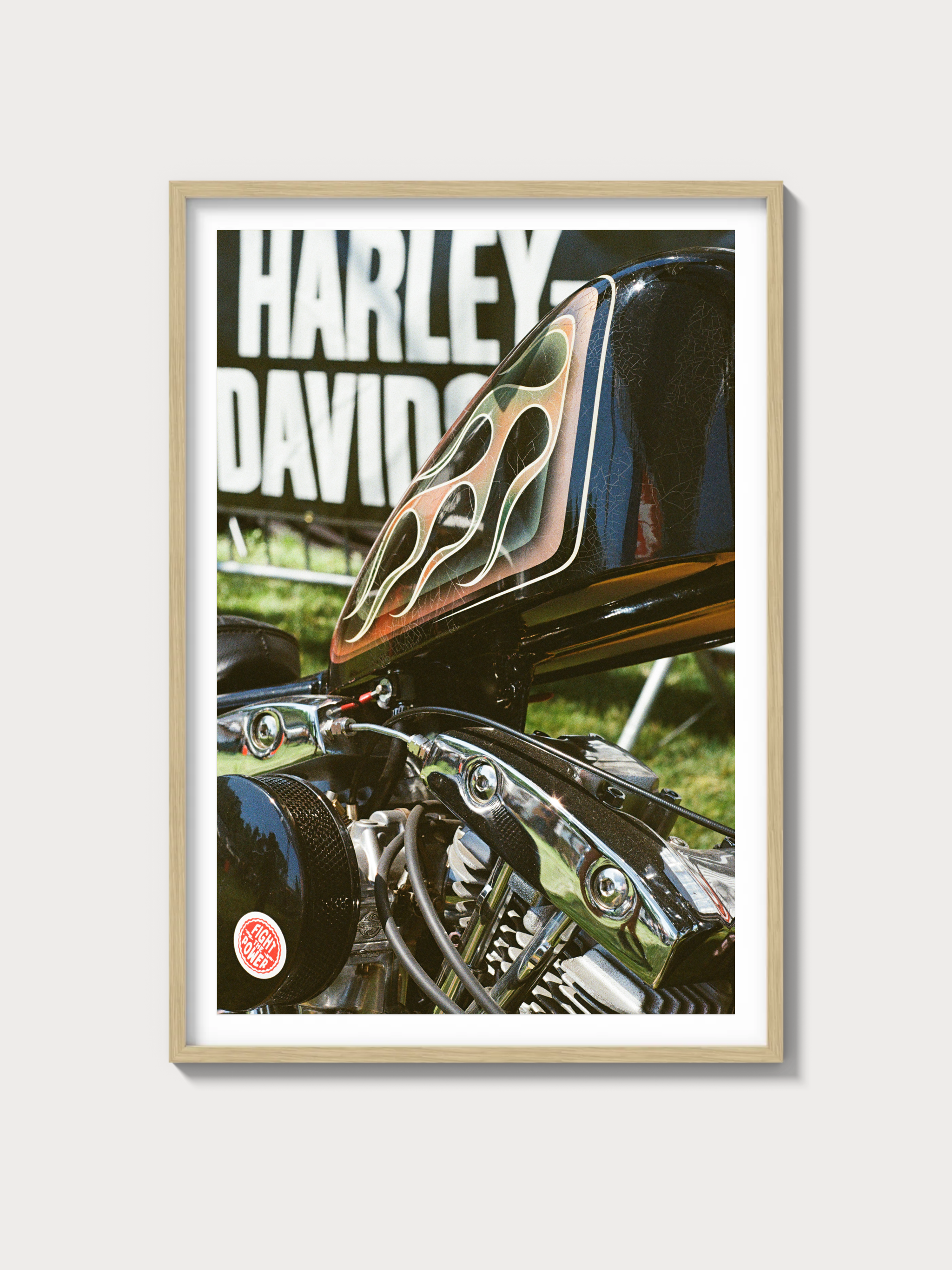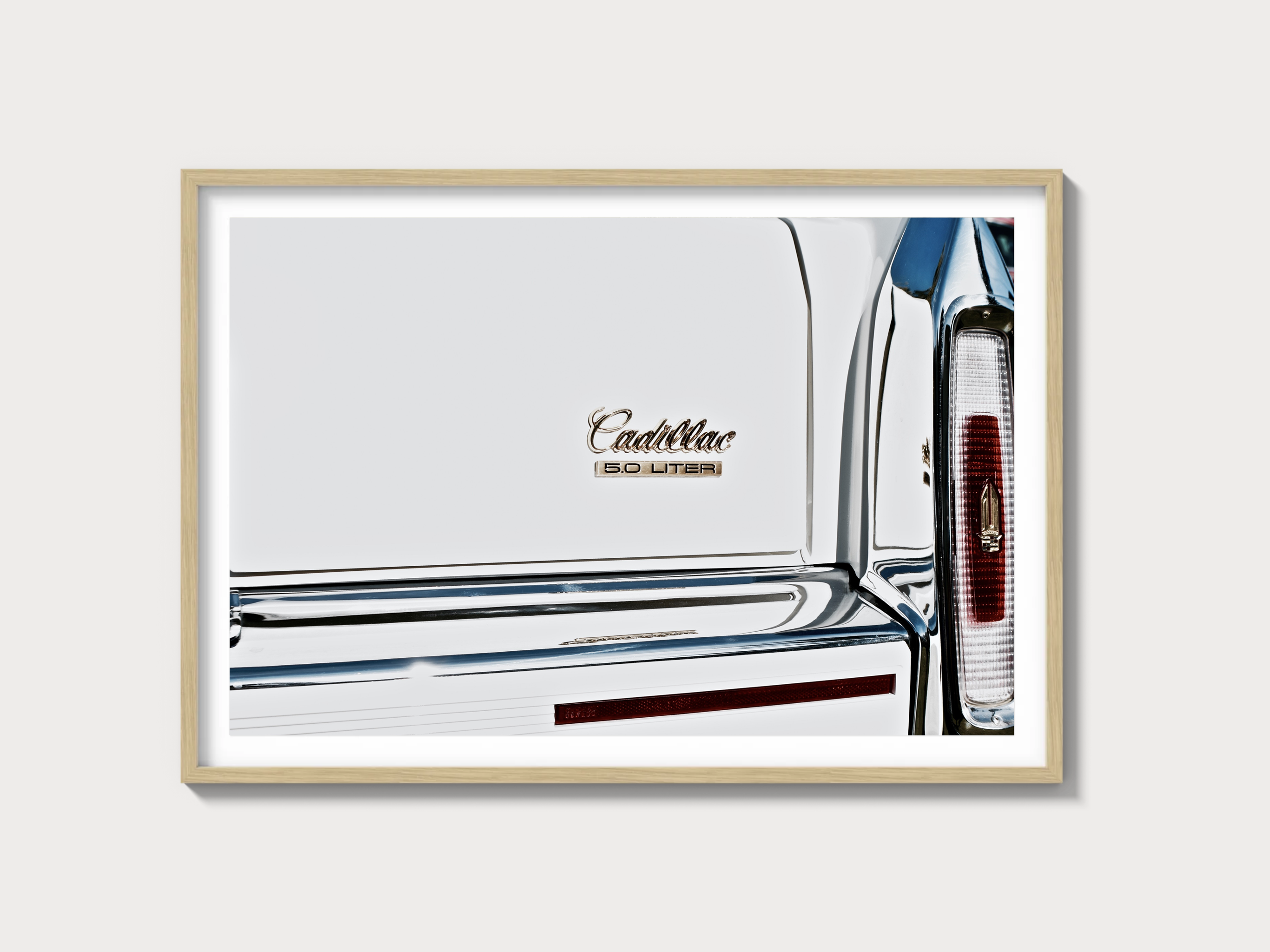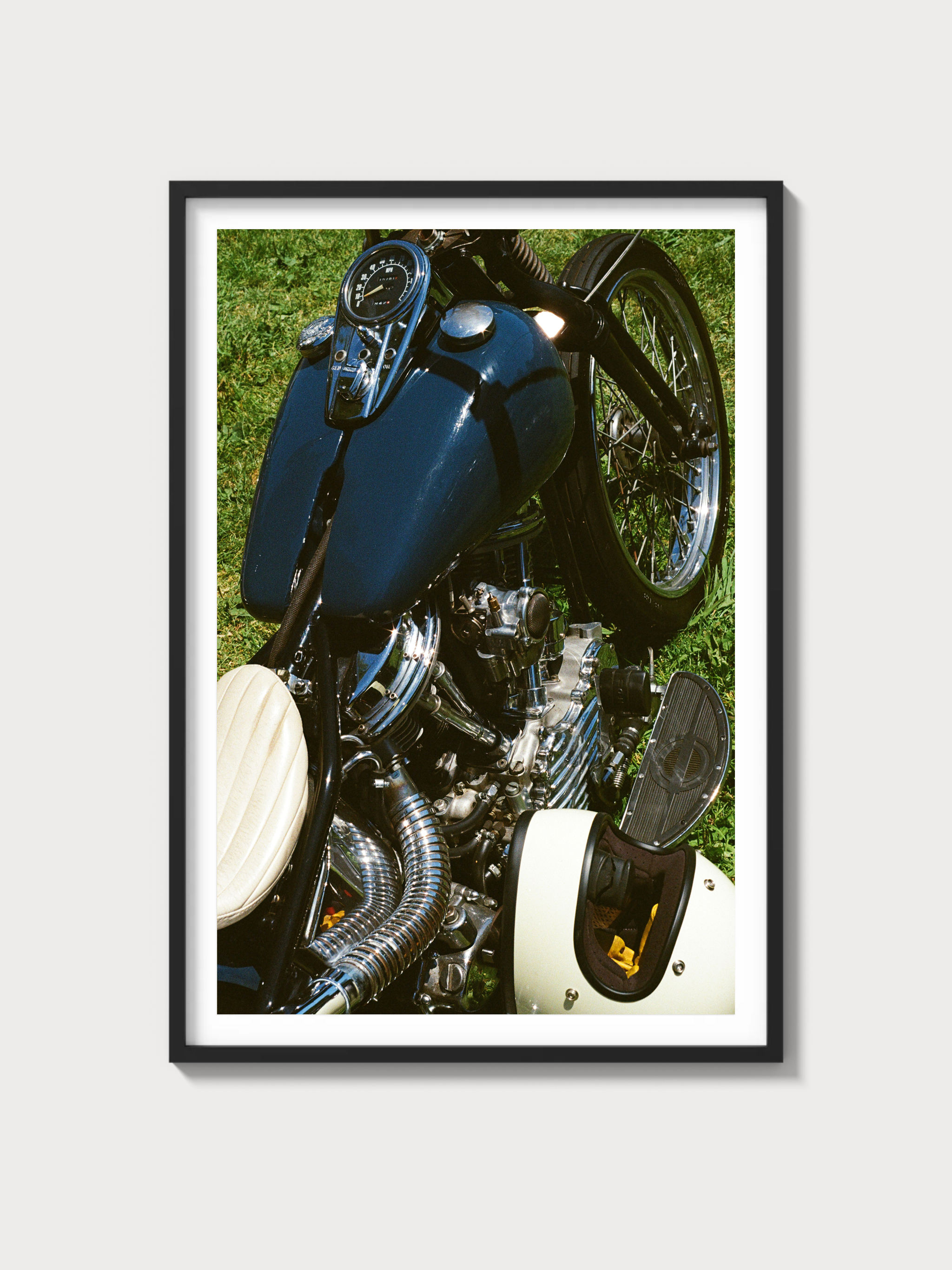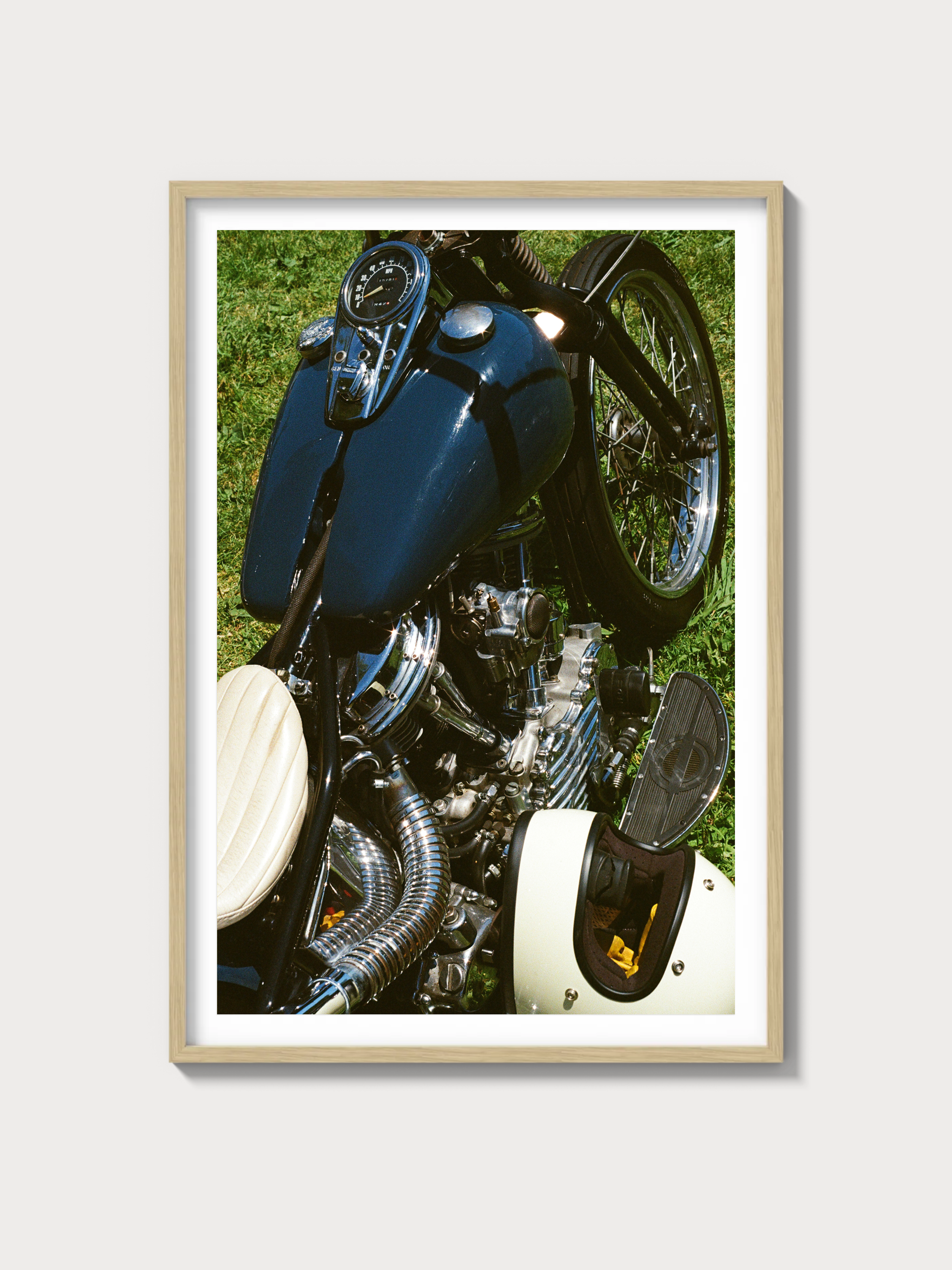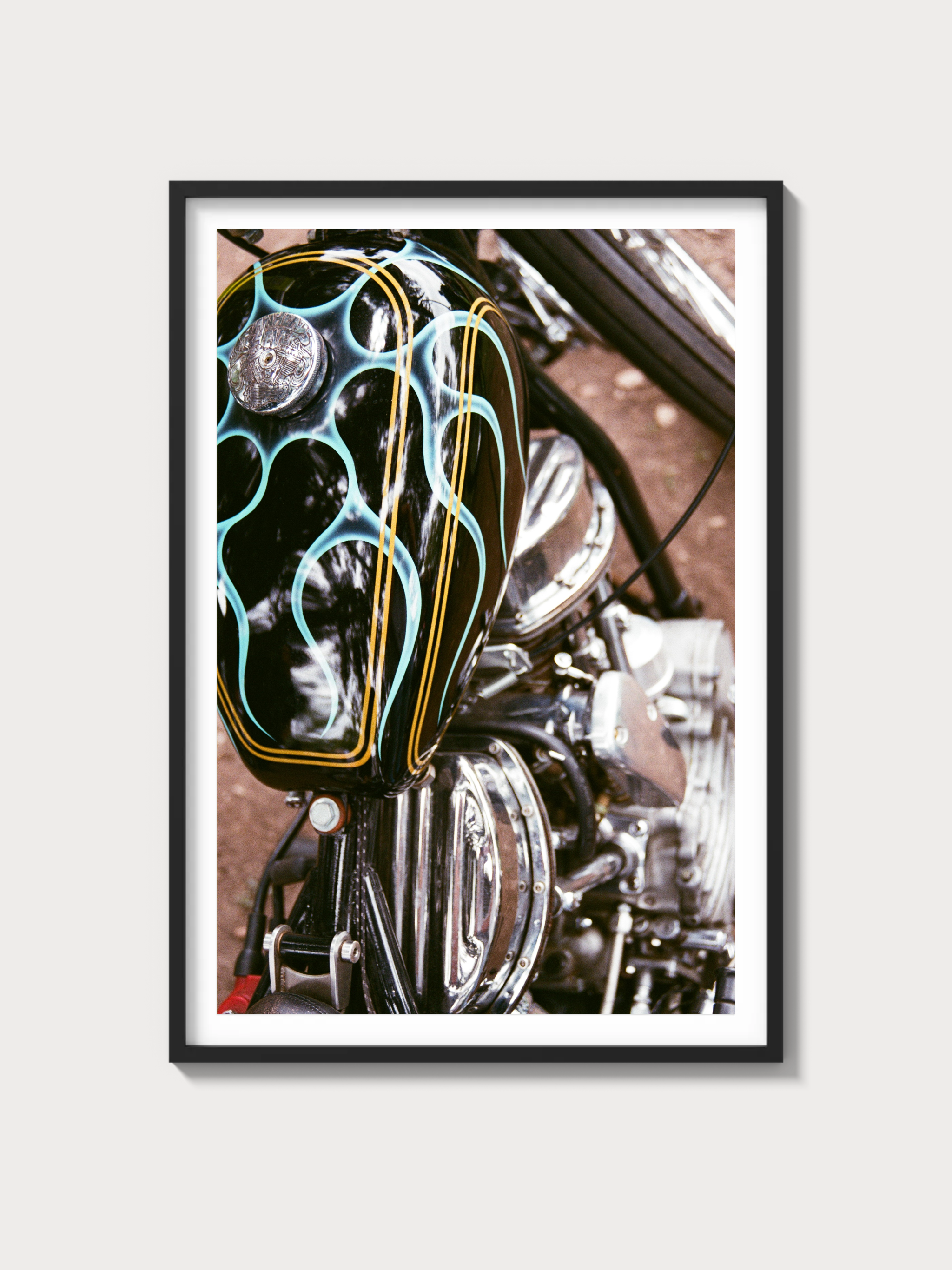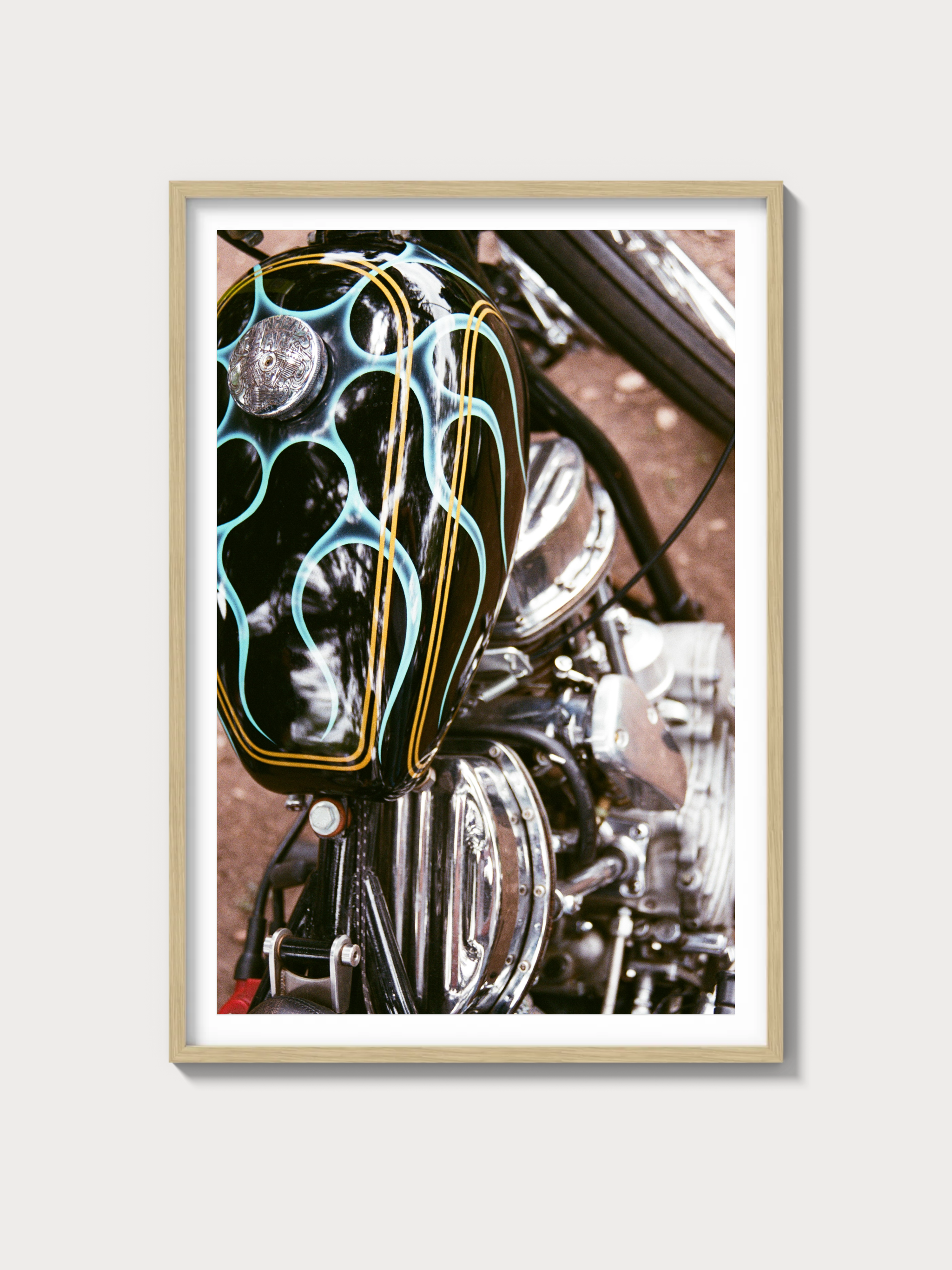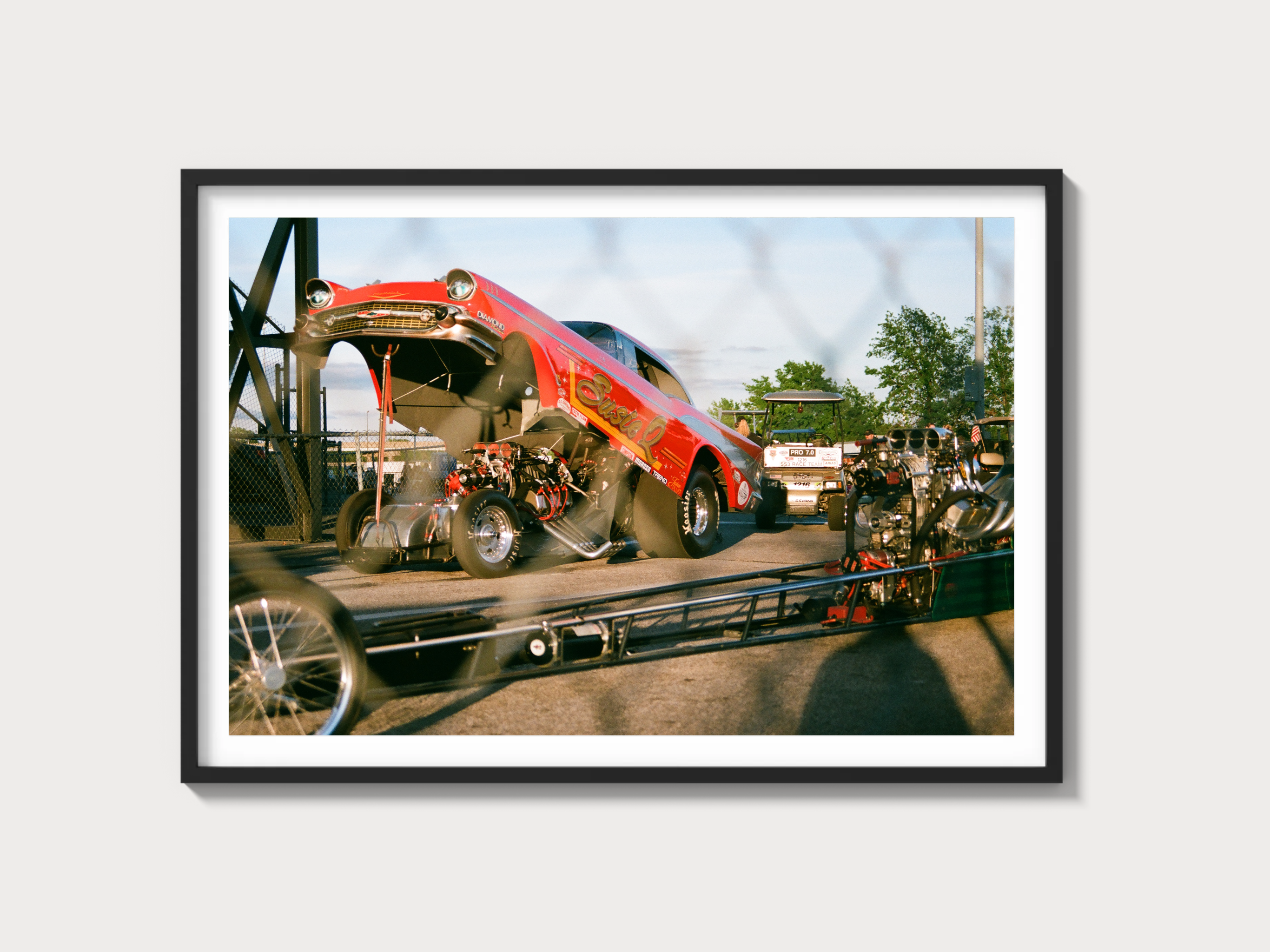1995–2002 Chevrolet Cavalier Z24 (3rd Gen J-body) — The Accessible American Hot Compact
Historical Context and Development Background
Chevrolet’s third-generation Cavalier (J-body) arrived for 1995, reimagined to meet tightening safety standards, improved NVH targets, and the compact segment’s escalating performance arms race. The Z24 badge reappeared as the line’s sport flagship, pairing the familiar front-drive J-body architecture with a hotter DOHC four-cylinder, uprated suspension tuning, and aero addenda that telegraphed intent without resorting to boy-racer excess.
Corporate strategy kept the J-body a high-volume, cost-efficient cornerstone for Chevrolet, but the Z24’s mission was clear: answer Ford’s Escort ZX2, Dodge’s Neon DOHC/R/T, Nissan’s Sentra SE-R, and Honda’s Civic EX/Si on accessibility and everyday livability while delivering credible performance. Styling leaned into the period’s organic surfacing—rounded lamps, sweeping roofline—with the Z24 adding a deep front fascia, rocker extensions, rear valance, fog lamps, 16-inch alloys, and a rear deck spoiler. A factory convertible, built by ASC, broadened the appeal from 1995 through 2000.
Underneath, the formula was classic J-body: MacPherson struts up front, a torsion-beam axle in the rear, and power-assisted rack-and-pinion steering. The Z24 specification tightened spring and damper rates and employed stouter anti-roll bars, while front disc/rear drum brakes remained the norm with anti-lock brakes available. Safety updates included dual front airbags from launch, with incremental refinement across the run.
Engine and Technical Specifications
Two closely related DOHC fours defined the Z24 experience during this era. Early 1995 examples used the 2.3-liter Quad 4 LD2, replaced from 1996 onward by the 2.4-liter LD9 “Twin Cam.” Output figures were deliberately similar to maintain lineup positioning, but drivability and torque delivery improved with the 2.4’s longer stroke.
| Parameter | 1995 Z24 (2.3L Quad 4 LD2) | 1996–2002 Z24 (2.4L LD9 Twin Cam) |
|---|---|---|
| Engine configuration | Inline-4, DOHC, 16v | Inline-4, DOHC, 16v |
| Displacement | 2,256 cc (2.3L) | 2,392 cc (2.4L) |
| Horsepower | 150 hp @ ~5,600 rpm | 150 hp @ 5,600 rpm |
| Torque | ~150 lb-ft @ midrange | 155 lb-ft @ 4,400 rpm |
| Induction | Naturally aspirated | Naturally aspirated |
| Fuel system | Multi-point fuel injection | Sequential multi-port fuel injection (SFI) |
| Compression ratio | ~9.5:1 | 9.5:1 |
| Bore x Stroke | 92.0 mm x 85.0 mm | 90.0 mm x 94.0 mm |
| Redline | ~6,500 rpm | ~6,500 rpm |
Transmissions included a 5-speed manual and the electronically controlled 4T40-E 4-speed automatic. Manual gearboxes transitioned to the Getrag F23 in the later years, replacing earlier Isuzu-sourced units. Z24 gearing favored usable midrange punch rather than lofty top-end speed.
Driving Experience and Handling Dynamics
The Z24’s charm is its straightforwardness. There’s light steering effort, accurate enough on-center, and a chassis that accepts assertive inputs without theatrics. The front end resists push longer than its humble torsion-beam rear suggests, helped by modest curb weight and the stickier rubber Chevrolet specified for the Z24’s 16-inch alloys. You feel road texture through the structure—more so than contemporary Civics—but secondary ride is controlled and long-haul fatigue is low.
The 2.4 LD9 doesn’t beg for the redline; it does its best work in the 3,000–5,500 rpm window, delivering credible surge that outpaces most economy trims of the day. Throttle response is clean, with the “puck” ignition cover—the Integrated Direct Ignition (IDI) module—keeping spark energy tidy. The 5-speed manual makes the Z24 feel alive; ratios are close enough to keep the Twin Cam on song, while the 4T40-E automatic is competent and relaxed, if less engaging. Braking is adequate in standard form, with ABS-equipped cars enjoying more confident threshold stops, especially in the wet.
Full Performance Specifications
Figures below reflect period instrumented tests of manual-transmission Z24s and widely cited manufacturer data; automatics trail modestly in acceleration.
| Metric | Specification |
|---|---|
| 0–60 mph | ~7.6 s (manual, typical period test) |
| Quarter-mile | ~16.0 s @ ~86 mph (manual, typical period test) |
| Top speed | ~125 mph (H-rated tires; factory-limited) |
| Layout | Front-engine, front-wheel drive |
| Curb weight | ~2,700–2,900 lb (coupe vs. convertible, equipment-dependent) |
| Brakes | Front ventilated discs, rear drums; ABS optional/often fitted |
| Suspension | Front MacPherson struts; rear torsion-beam axle; Z24 sport tuning |
| Gearbox | 5-speed manual (Isuzu early; Getrag F23 later), or 4T40-E 4-speed automatic |
Variant Breakdown (Z24 within the 3rd-Gen Cavalier Family)
Z24 sat above base and LS trims, available primarily as a coupe, with a convertible option through 2000. Feature content varied by year, but the essentials remained consistent: DOHC engine, aero kit, larger wheels/tires, and sport suspension calibration.
| Variant | Years | Engine | Key Differences | Market Notes | Production Numbers |
|---|---|---|---|---|---|
| Z24 Coupe | 1995–2002 | 1995: 2.3L Quad 4; 1996–2002: 2.4L LD9 | Aero kit, fog lamps, 16-in alloys, rear spoiler, sport suspension; 2000 refresh brought revised fascias and details; later years adopted Getrag F23 manual | Sold in U.S. and Canada | Not officially published by GM per trim |
| Z24 Convertible (ASC) | 1995–2000 | 1995: 2.3L; 1996–2000: 2.4L LD9 | Power soft top, structural reinforcements, similar Z24 appearance package | U.S. and Canada; ASC assembly | Not publicly broken out; ASC totals not comprehensively released |
| Late Z24 (post-refresh) | 2000–2002 | 2.4L LD9 | Exterior/interior detail changes, revised wheel designs, Getrag F23 manual replaces earlier unit | Coupe only by 2001–2002 | Not officially published by GM per trim |
Colors and trims followed the broader Cavalier palette by model year; Z24-specific cues centered on body kit, wheels, badging, and interior trim accents rather than unique paint codes. Dealer-installed stripes and appearance items were common but not factory-exclusive.
Ownership Notes: Maintenance, Parts, and Restoration
- Powertrain durability: The 2.4L LD9 is stout when serviced, with a timing chain (no scheduled belt replacement) but known chain tensioner/guide wear if oil changes are neglected. The 1995 2.3L shares Quad 4 lineage and can exhibit gasket seepage if overheated.
- Water pump: On the LD9, the water pump is driven off the timing chain end; leakage or failure requires significant disassembly. Preventive coolant maintenance helps longevity.
- Ignition: The Integrated Direct Ignition (IDI) housing and coil cassettes can fail with age. Misfires, hard starts, or bucking under load often trace here; parts remain available in the aftermarket.
- 4T40-E automatic: Generally robust; common aging issues include shift solenoids and pressure control solenoid wear. Fluid and filter services mitigate many complaints.
- Chassis wear: Front control arm bushings, strut mounts, and rear axle bushings are routine replacement items. Rear wheel bearings and parking brake cables are also common service points.
- Cooling system: Dex-Cool-equipped cars require timely coolant changes to prevent sludge in neglected systems. Radiators and heater cores are straightforward replacements.
- Rust watch-points: Subframe mounts, rocker panels, rear wheel arches, and trunk floors in salt-belt cars.
- Service intervals (typical owner practice): Engine oil every 3,000–5,000 miles; plugs 60,000–100,000 miles (correct heat range matters with the IDI); coolant 5 years/~100,000 miles; transmission fluid 30,000–60,000 miles depending on use.
- Parts availability: Excellent for wear items; OE and aftermarket support remains strong. Interior trim and convertible-specific hardware can be scarcer, but specialist breakers and J-body communities help fill gaps.
- Restoration difficulty: Mechanically straightforward. The tight engine bay around the timing cover area makes water pump and chain service time-consuming relative to the car’s market value.
Cultural Relevance and Market Standing
The Z24 was a staple of North American commuter culture with just enough edge to bait enthusiasts on a budget. It featured in period advertising and dealer motorsport tie-ins, and while it didn’t headline professional series, it appeared widely in grassroots autocross, local road-course lapping days, and compact-class circle track racing. The model’s ubiquity made it a canvas for the late-’90s sport-compact scene—intakes, mufflers, lowering springs, and the occasional body kit—often before owners graduated to pricier hardware.
Collector desirability today is modest but real for unmodified, low-mile Z24 coupes and especially convertibles. Public auction records are sporadic; when they surface, clean manuals with documentation draw the strongest interest, while high-mileage or heavily modified examples remain inexpensive entry points. Survivors with original paint, factory wheels, intact aero, and working IDI systems stand out in a thinning field.
FAQs
Is the 2.4L Twin Cam (LD9) reliable?
Yes, with maintenance. Regular oil changes are key to timing chain and tensioner health. Watch for water pump leakage, IDI housing issues, and typical aging gaskets and sensors.
What are typical performance numbers for a Z24?
Manual-transmission cars commonly recorded ~7.6 seconds 0–60 mph, quarter-mile runs around 16.0 seconds at ~86 mph, and a factory-limited top speed near 125 mph on H-rated tires.
Which years are most desirable?
Many enthusiasts favor 1996–1999 manuals for the classic look and LD9 tune, and 2000–2002 for the mild refresh and Getrag F23 manual. Unmodified convertibles are rare and sought after by model loyalists.
Known problem spots?
LD9 water pumps, timing chain tensioner wear (when oil changes are skipped), IDI coil housing failures, aging engine mounts, 4T40-E solenoids, and typical suspension bushings. Rust in salt climates is the leading killer of otherwise sound cars.
Does the Z24 handle well compared with rivals?
It’s balanced and predictable with good mid-corner grip for its class. A Civic Si or Sentra SE-R offers a purer steering feel, but the Z24’s broader torque band and everyday ride quality make it a strong all-rounder.
Manual or automatic?
The 5-speed manual makes the most of the LD9’s torque curve and is the enthusiast’s pick. The 4T40-E automatic is smooth and durable for commuting.
Are production numbers known for the Z24?
GM did not consistently publish Z24-specific totals by body style and year. Convertible build counts were handled by ASC and are not comprehensively released in official breakouts.
What differentiates the Z24 from LS trims?
The Z24 includes the DOHC engine, sport suspension, aero kit with fog lamps, specific 16-inch wheels, and badging, plus commonly higher equipment levels and available ABS/alloy packages.
Any parts to stock as a new owner?
Keep a spare IDI coil cassette (or verified-good unit), fresh plugs, a serpentine belt, and quality coolant. Proactively replacing tired engine mounts and strut mounts meaningfully improves refinement.




